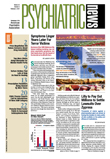Recent deaths among severely underweight fashion models have prompted Italy's cabinet to implement body mass index (BMI) standards for models. The deaths have also spurred health organizations to issue guidelines to increase the fashion industry's accountability for models' well-being and to raise awareness about eating disorders among people working in the fashion industry, including those who aspire to be models.
A month after the death of Brazilian model Ana Carolina Reston, 21, from complications of anorexia nervosa in December 2006, Italian Youth Policy and Sports Minister Giovana Melandri met with Mario Boselli, head of the Italian National Fashion Chamber, to sign a self-regulated code aimed at Italian modeling agencies, clothing designers, and others who work in the fashion industry.
Under the new code, models with a BMI of less than 18.5 and models under age 16 would be banned from Italian fashion shows.
The Italian leaders signed the code in time for the trend-setting Milan Fashion Week in February, during which fall-winter clothing collections for 2007-2008 will be debuted.
Italy is not alone in passing regulations in an attempt to improve the health of fashion models. Last September the organizers of Spain's Madrid Fashion Week announced they were banning models with BMIs below 18.
Reston's death followed that of Uruguayan Model Luisel Ramos, who died of heart failure during a fashion show in Montevideo in August 2006. And shortly after Reston's death, a 21-year-old Brazilian fashion student died of complications from anorexia, according to the January 14 New York Times.
“Steps now being taken in Italy, Spain, and elsewhere to reduce the number—and impact—of ultra-thin female models in prominent fashion shows offer encouraging signs that political leaders in those nations understand that flaunting emaciated female body images can potentially damage young women and provoke eating disorders among the vulnerable,” Joel Yager, M.D., told Psychiatric News.
Yager is a professor of psychiatry and vice chair for education at the University of New Mexico School of Medicine and co-wrote APA's Practice Guideline for the Treatment of Patients with Eating Disorders.
“'Scrawny' sends a very unhealthy message,” he emphasized.“ We can only hope that influence leaders in the United States get it as well, exert better self-regulation, and promote healthy female bodies rather than 'skeleton chic' in the American fashion industry and in our media.”
Reforming the ideals of the fashion industry is the goal behind new guidelines issued by the Academy for Eating Disorders (AED). The organization's prevention-focused special interest group in January issued the guidelines to “create a dialogue with the fashion industry and assist them with taking appropriate measures to protect the health and well-being of models,” Eric van Furth, Ph.D., president of the academy, told
Psychiatric News (
see box on facing page).
Van Furth said he is not very hopeful, however, that the fashion industry will adopt the academy's guidelines anytime soon. “The response from the fashion industry has been one of resistance,” he said.
For example, after the AED guidelines became public, the Council of Fashion Designers of America formed a health committee and initiative that issued a number of recommendations that did not mention models' BMI or weight.
While the recommendations did emphasize the need to educate those in the fashion industry about the early warning signs of eating disorders, they also specified that “the health initiative is about awareness and education, not policing....Therefore, the committee is not recommending that models get a doctor's physical examination to assess their health or body mass index to be permitted to work.”
Van Furth said that the fashion council's guidelines show that the“ fashion industry has great difficulty in taking this problem seriously. They are only concerned about models' health as long as there are no severe consequences for the fashion industry.” ▪
